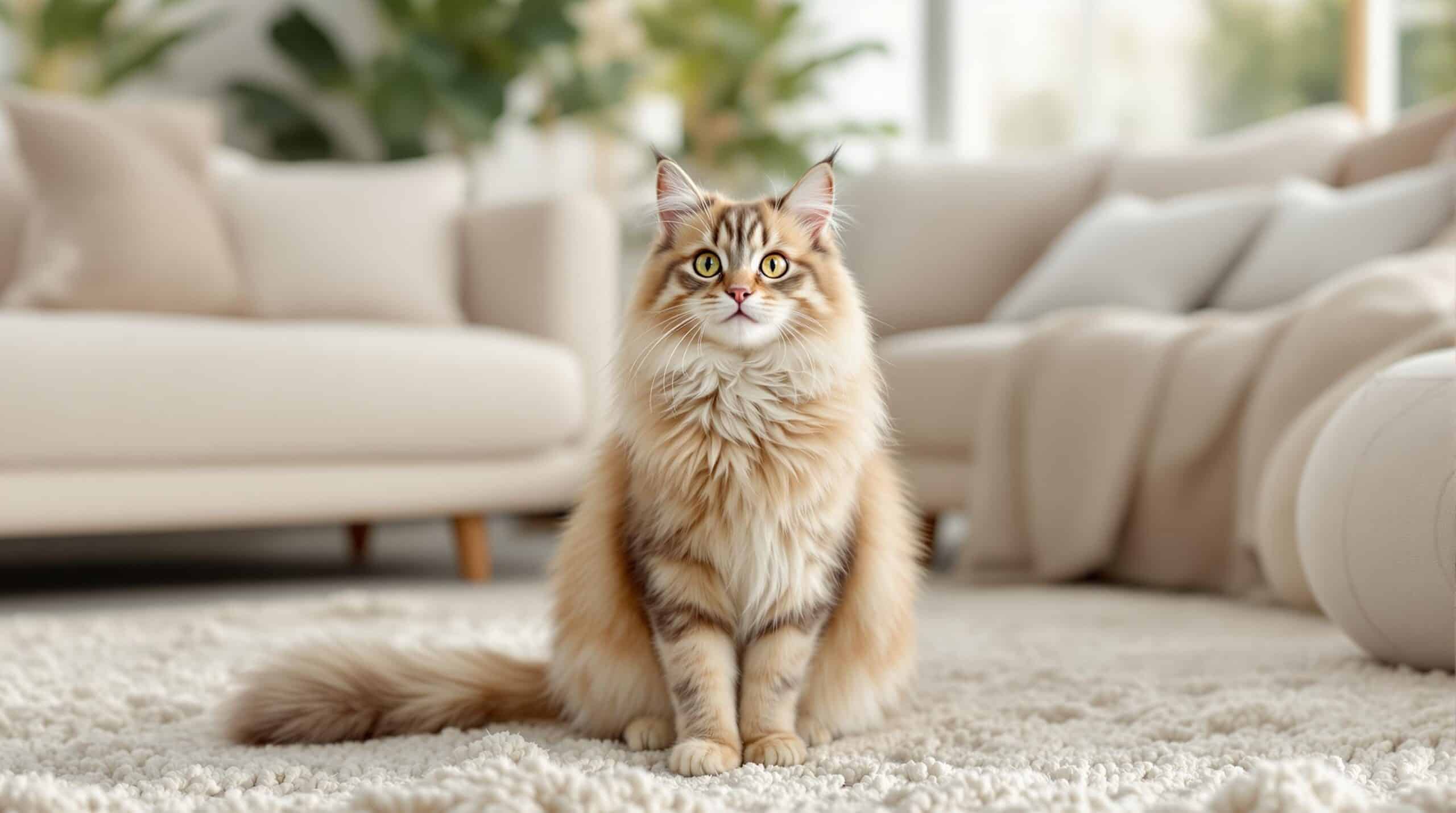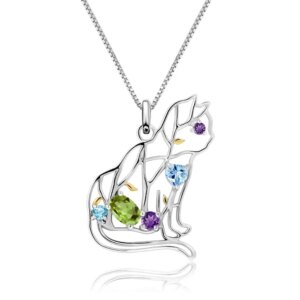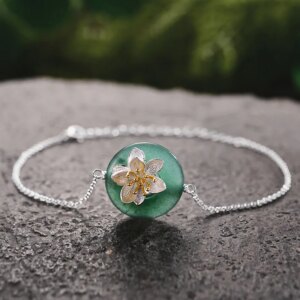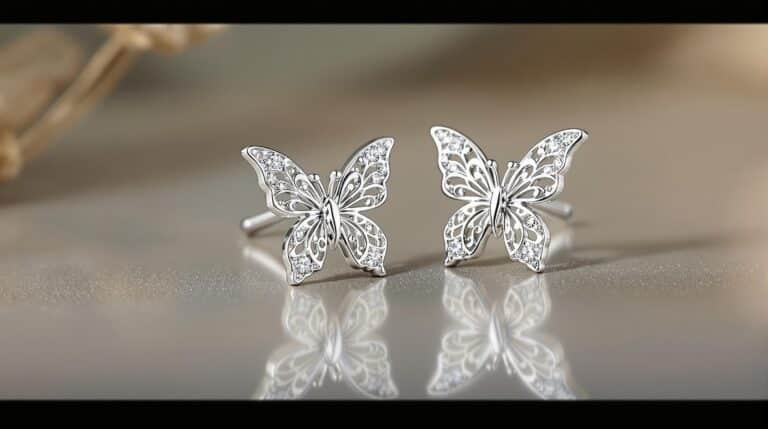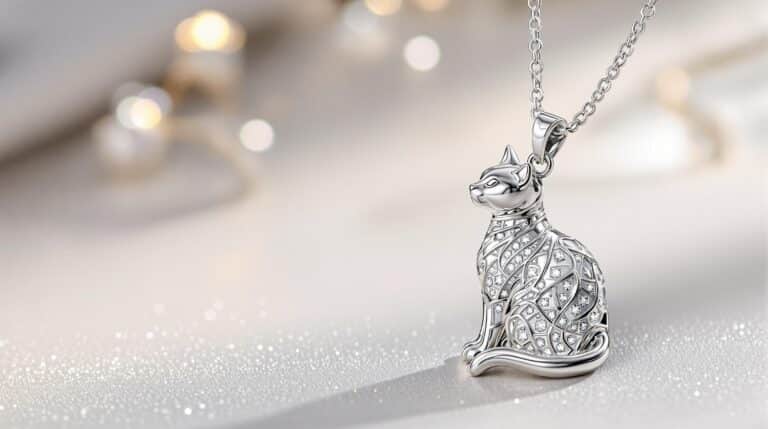Cats that are hypoallergenic can be a game changer for allergy sufferers who still want to enjoy the companionship of a feline friend. This guide will explore the top hypoallergenic cat breeds, their unique traits, and essential tips for managing allergies. Whether you’re a cat lover with allergies or looking for a pet-friendly home, this article will provide valuable insights and practical advice.
Understanding Hypoallergenic Cats
What Makes a Cat Hypoallergenic
Hypoallergenic cats are breeds that produce fewer allergens, making them more suitable for people with allergies. The primary allergen in cats is a protein called Fel d 1, which is found in their saliva, skin, and urine. Hypoallergenic cats produce less of this protein, reducing the likelihood of triggering allergic reactions. At Cat Karma Creations, we understand the importance of finding the perfect feline companion, and our cat-themed jewelry and gifts can help you celebrate your new hypoallergenic friend.
Common Allergens in Cats
Besides Fel d 1, other common allergens in cats include dander (dead skin cells), fur, and urine. These allergens can cause symptoms such as sneezing, itchy eyes, and skin rashes. Understanding the allergens can help you take better preventive measures and choose a cat that is more likely to be allergy-friendly. For more information, feel free to contact us or visit our cat-themed jewelry section.
How to Identify Hypoallergenic Cats
To identify hypoallergenic cats, look for breeds that are known to produce less Fel d 1. Additionally, consider the cat’s fur type and grooming needs, as these can also affect allergen levels. Some breeds, like the Siberian and Balinese, are well-known for their hypoallergenic qualities and are often recommended for allergy sufferers. Our nature-inspired jewelry and gifts can help you celebrate the beauty of these unique breeds.
Top Hypoallergenic Cat Breeds
Siberian Cat
The Siberian cat is a large, affectionate, and playful breed that is highly regarded for its hypoallergenic qualities. Siberians produce significantly less Fel d 1 compared to other breeds, making them an excellent choice for allergy sufferers. They are known for their thick, luxurious coats and friendly personalities, which make them a great addition to any family. If you’re considering a Siberian, why not treat yourself or a loved one with our Beautiful Handmade Sterling Silver Cat Pendant?
Balinese Cat
The Balinese cat is a medium-sized breed with a moderate hypoallergenic level. They are known for their intelligence, vocal nature, and high activity levels. Balinese cats have a silky, long coat that requires regular grooming to maintain its beauty. Their hypoallergenic qualities and engaging personalities make them a popular choice for allergy sufferers who want an active and interactive pet. For a touch of elegance, consider our Enchanting Cat and Butterfly Gemstone Necklace.
Cornish Rex
The Cornish Rex is a small, playful, and affectionate breed that is highly hypoallergenic. They have a unique curly coat that is short and fine, requiring minimal grooming. Cornish Rex cats are known for their high energy levels and friendly dispositions, making them a great fit for families or individuals who enjoy an active lifestyle. Their low allergen production and easy-care coats make them an ideal choice for allergy sufferers. Our Paw Print Charm Bracelet is a perfect gift for any Cornish Rex lover.
Other Notable Breeds
While the Siberian, Balinese, and Cornish Rex are top choices for hypoallergenic cats, there are several other breeds worth considering. The Sphynx, for example, is a hairless breed that produces less Fel d 1 and dander, making it a good option for allergy sufferers. The Devon Rex, a cousin of the Cornish Rex, also has a curly coat and low allergen production. Other breeds like the Javanese and Oriental Shorthair are also known for their hypoallergenic qualities. For a unique and special gift, explore our Stylish Cat Lover Necklaces.
Caring for a Hypoallergenic Cat
Grooming Tips
Regular grooming is essential for maintaining the hypoallergenic qualities of your cat. Brushing your cat’s coat can help remove loose hair and dander, reducing the amount of allergens in your home. For long-haired breeds like the Balinese, daily brushing is recommended to prevent matting and tangles. Bathing your cat every few weeks can also help reduce allergens, but be sure to use a gentle, hypoallergenic shampoo. Our Exquisite Silver Cat Earrings can add a touch of elegance to your grooming routine.
Diet and Nutrition
A healthy diet can contribute to your cat’s overall well-being and may help reduce allergen production. Look for high-quality cat foods that are rich in essential nutrients and low in allergens. Some hypoallergenic cat foods are specifically formulated to support skin health and reduce dander. Adding supplements like omega-3 fatty acids can also help keep your cat’s coat healthy and reduce allergens. For a thoughtful gift, consider our Elegant Amethyst Bird Earrings – Handmade In Silver.
Environmental Management
Creating an allergen-friendly environment is crucial for managing cat allergies. Use air purifiers and HEPA filters to reduce airborne allergens in your home. Regularly vacuum and clean surfaces to remove dander and other allergens. Consider using hypoallergenic bedding and furniture covers to create a more allergy-friendly living space. Designating certain areas of your home as cat-free zones can also help minimize allergen exposure. Our Meditation Cushion with Cat Design can help you create a peaceful and allergy-friendly space.
Managing Cat Allergies
Symptoms of Cat Allergies
Cat allergies can cause a range of symptoms, including sneezing, itchy and watery eyes, nasal congestion, and skin rashes. Some people may also experience asthma symptoms, such as wheezing and shortness of breath. Recognizing these symptoms early can help you take appropriate measures to manage your allergies effectively. For more information, feel free to contact us or visit our All Jewelry section.
Treatment Options
There are several treatment options available for managing cat allergies. Over-the-counter antihistamines and decongestants can provide relief from common allergy symptoms. Nasal corticosteroids and eye drops can also help alleviate nasal and eye symptoms. For more severe allergies, your doctor may prescribe stronger medications or recommend immunotherapy, which involves gradually exposing you to allergens to build tolerance. Our Wrap Around Cat Ring can be a beautiful reminder of your journey to manage allergies.
Preventive Measures
Preventive measures can significantly reduce the impact of cat allergies. In addition to regular grooming and environmental management, consider using hypoallergenic air filters and vacuum cleaners. Wash your hands and face after handling your cat to remove allergens. Using hypoallergenic cleaning products can also help reduce allergen levels in your home. Regularly cleaning and replacing air filters in your HVAC system can further improve indoor air quality. For a unique gift, explore our Charming Cat Brooch – Unique Animal Pin For Accessories.
Popular Quote
“A cat has absolute emotional honesty; human beings, for one reason or another, may hide their feelings, but a cat does not.” – Ernest Hemingway
Statistical Fact
According to the American College of Allergy, Asthma, and Immunology, approximately 10% of the U.S. population is allergic to household pets, with cats being the most common allergen. This statistic highlights the importance of understanding and managing cat allergies effectively. For more information, visit the American College of Allergy, Asthma, and Immunology.
Three Tips for Managing Cat Allergies
- Regular Grooming: Brush your cat daily to remove loose hair and dander. This can significantly reduce the amount of allergens in your home.
- Use Air Purifiers: Invest in a high-quality air purifier with a HEPA filter to remove airborne allergens and improve indoor air quality.
- Create Cat-Free Zones: Designate certain areas of your home, such as bedrooms, as cat-free zones to minimize allergen exposure.
Popular Questions
- What is the most hypoallergenic cat breed? The Siberian cat is often considered the most hypoallergenic breed due to its low production of Fel d 1.
- Can hypoallergenic cats still cause allergies? While hypoallergenic cats produce fewer allergens, they can still cause allergic reactions in some people. Regular grooming and environmental management are essential.
- How can I reduce cat allergens in my home? Use air purifiers, hypoallergenic bedding, and regular cleaning to reduce allergens. Also, wash your hands and face after handling your cat.
- Are there hypoallergenic cat foods? Yes, some cat foods are specifically formulated to support skin health and reduce dander, which can help minimize allergens.
- Can I train my cat to be hypoallergenic? While you can’t train a cat to be hypoallergenic, regular grooming and a healthy diet can help reduce allergen production.
Final Thoughts About cats that are hypoallergenic
In conclusion, hypoallergenic cats offer a wonderful solution for cat lovers with allergies. By understanding the unique traits of these breeds and following proper care and management techniques, you can enjoy the companionship of a feline friend without the discomfort of allergic reactions. Visit our website to explore our range of cat-themed jewelry and gifts, perfect for any cat lover in your life. For more information, feel free to contact us at (800) 343-1604 or info@catkarmacreations.com. Follow us on Facebook, Instagram, and Pinterest for more updates and inspiration.

